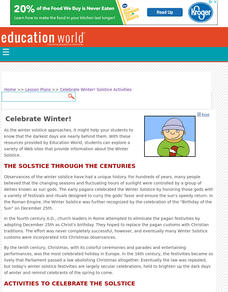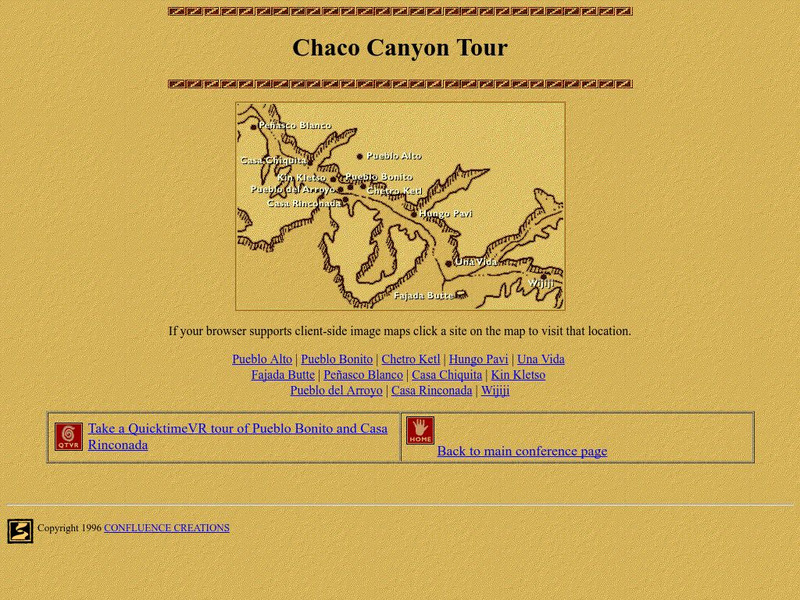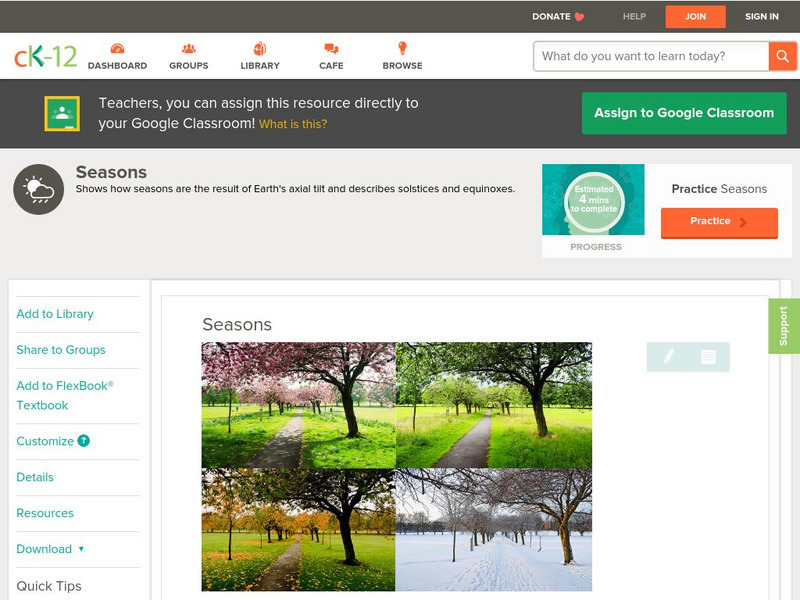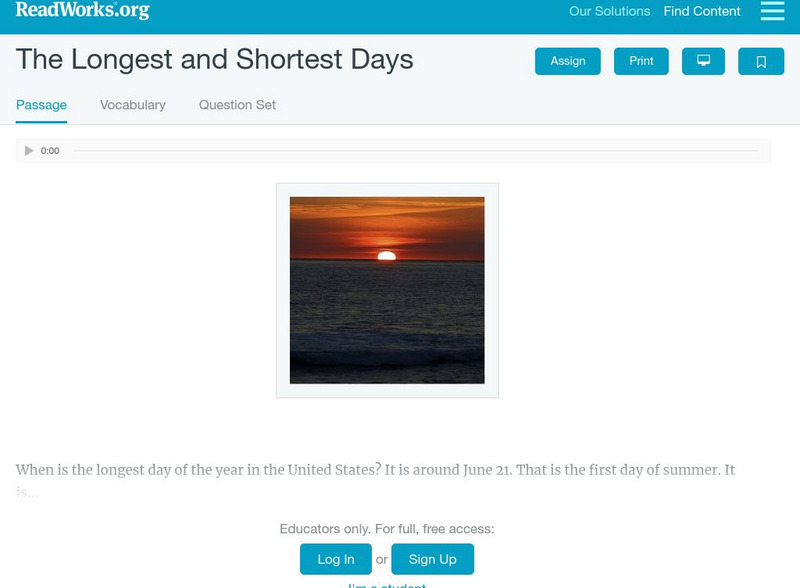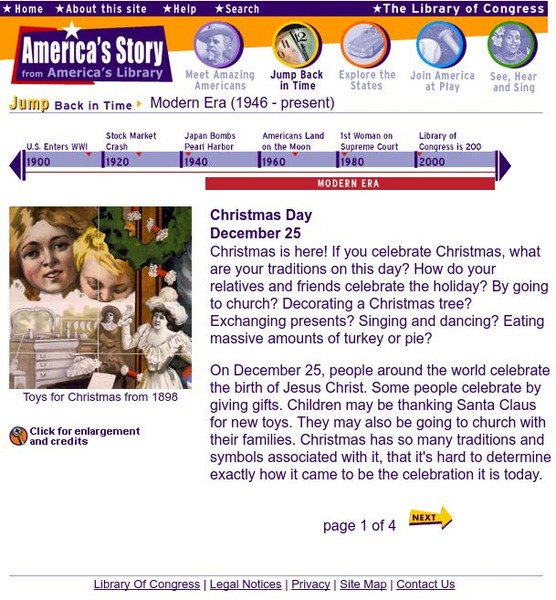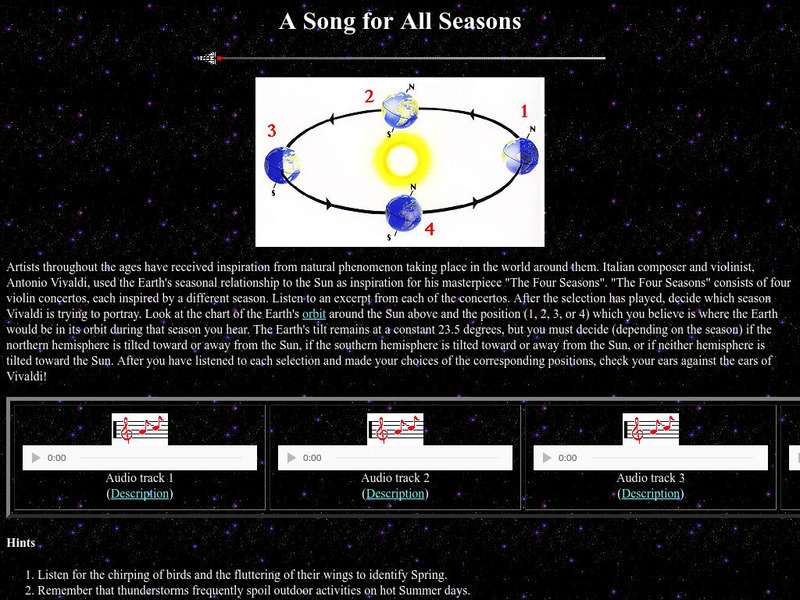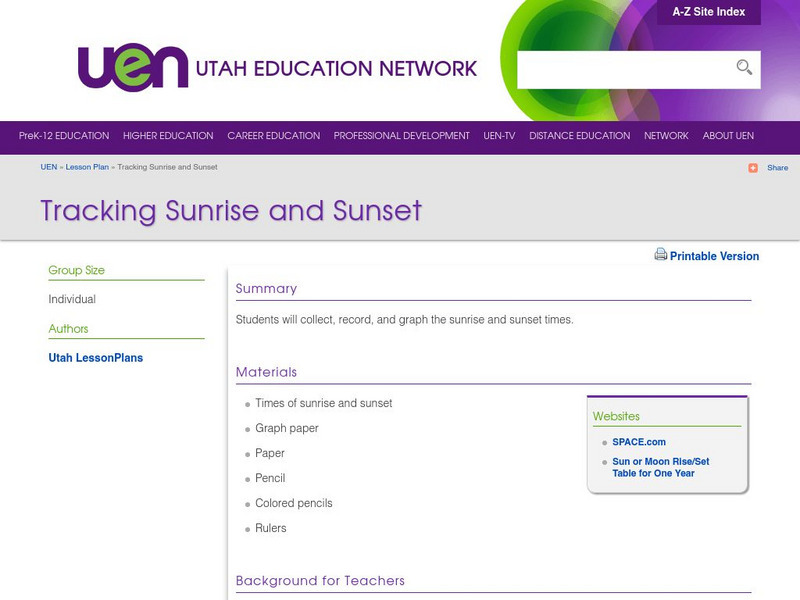Texas Instruments
Sands of Time
Twelfth graders explore an application of integration. A calculus lesson prompts class members to find the length of the day where they live during the winter and summer solstice. Using data relating to the solstices at various...
Academy of American Poets
Teach This Poem: "Toward the Winter Solstice" by Timothy Steele
Timothy Steele's poem, "Toward the Winter Solstice," offers scholars an opportunity to consider what poets and scientists could learn from each other's work. First, learners examine a NASA image of a star-forming region in the Orion...
Weber State University
The Sun and the Seasons
Why is there more daylight in June than in December if you live above the equator? How does the angle of sunlight shift throughout the year? Answer these questions and more with an interactive article about the sun, its path through the...
CK-12 Foundation
Seasons: Shadow Lengths
Before iPhones and calendars, how did humans determine the seasons of the year? Middle school scientists discover how to use shadows to determine the time of year in an enlightening interactive. Pupils manipulate the sun and examine the...
Stanford University
Solstice and Equinox Season Model
How can December 21 be the shortest day of the year when all days are 24 hours long? Pupils see how to build a model showing the differences between winter and summer solstices and equinoxes. Using this model, classes can then discuss...
Curated OER
Bill Nye Video: Earth's Seasons
In this earth's seasons activity, students answer fill in the blank questions after seeing Bill Nye's video. Topics include the rotation of the earth around the sun, the tilt of the earth, the time zones and sunlight.
Curated OER
Exploring Seasonal Shadows and Sunlight
What can shadows tell us about the changing season? Over several months, astronomy learners record length and position of an outdoor object's shadow, such as a flagpole. They apply the data to a growing hypothesis and note the patterns...
Curated OER
Student Exploration: Summer and Winter
In this recognizing the seasons online/interactive instructional activity, students explore the Earth's positions and determine the summer and winter season. Students answer 21 short answer questions
Curated OER
Winter and Summer Storms Scenarios
Fourth graders discover the patterns that create summer and winter storms. Working in groups, they create model storms for summer and winter. Students discuss the reasons why summer storms and winter storms are different and explain...
Curated OER
Celebrate Winter!
Students understand, and participate in, both the historical and scientific aspects of this year's celebrations by introducing them to a selection of activities.
Curated OER
Seeing Solar Processes
In this seasons activity, students compare 24 hour filmstrips for a single day in Canada, the U.S.A., and the Arctic Circle to determine the different seasons. This activity has 12 fill in the blank.
Curated OER
Determining Hours of Daylight
In this daylight hours worksheet, students will study illustrations showing the length of day at every 10-degrees of latitude for the winter and summer solstices. Students will complete 4 short answer questions based on the illustrations.
Curated OER
The History of Christmas Trees, Part One
Young scholars read an article about Winter Solstice celebrations. They consider the symbolism of evergreens in winter and how different cultures have used evergreens in winter celebrations throughout history.
Other
Lunar and Planetary Institute: Sky Tellers: Myths, Magic, Mysteries of Universe
Very nice website with excellent graphics depicting the change of the seasons and how the seasons are different between the northern and southern hemisphere. Also has a nice informational table of the spring and fall equinox and summer...
Other
Earth Sky: Everything You Need to Know: December Solstice 2014
Winter solstice, earliest sunset, latest sunrise. It seems that, in the Northern Hemisphere anyway, these three events should happen on the same day. Read this explanation of the changing of the seasons and learn why the winter solstice...
University of Colorado
University of Colorado: Confluence Creations: Chaco Canyon Tour
Take a tour of the Chaco Canyon archaeological site. The map takes you to the many dwellings and important astronomical sites. Virtual tours are available if you have Quick Time.
CK-12 Foundation
Ck 12: Earth Science: Seasons
[Free Registration/Login may be required to access all resource tools.] Learn how and why seasons occur.
Read Works
Read Works: The Longest and Shortest Days
[Free Registration/Login Required] An informational text about the longest and shortest days of the year in the United States. A question sheet is available to help students build skills in reading comprehension.
National Earth Science Teachers Association
Windows to the Universe: The Winter Solstice
Short explanation of the winter solstice, with a diagram. Available in three versions, Elementary, Intermediate, and Advanced. There is also a tab that accesses a Spanish-language version.
Library of Congress
Loc: America's Story: Christmas Day, December 25
Christmas traditions are unique to each family. But we share a common origin of this special holiday. Learn about the fundamentals of this celebration at this Library of Congress site.
NASA
Nasa Star Child: A Song for All Seasons
After listening to excerpts from four of the violin concertos from "The Four Seasons" by Italian composer and violinist, Antonio Vivaldi, decide which excerpt was meant to go with which season, and also decide where the earth would be in...
Utah Education Network
Uen: Tracking Sunrise and Sunset
Young scholars will collect, record, and graph the sunrise and sunset times to see how they change throughout the year.
National Geographic
National Geographic: A Reason for the Season
This site provides a learning activity that can be adapted for all age levels that deals with the seasons. Students are asked to become a "season sleuth" and discover what causes the seasons to change.
NumberNut
Number Nut: Calendar Origins
History and mathematics merge in this lesson that explores the origin of the calendar. Learn how it all got started in this detailed lesson that includes a simple months of the year game and a more challenging time conversion game. Both...











